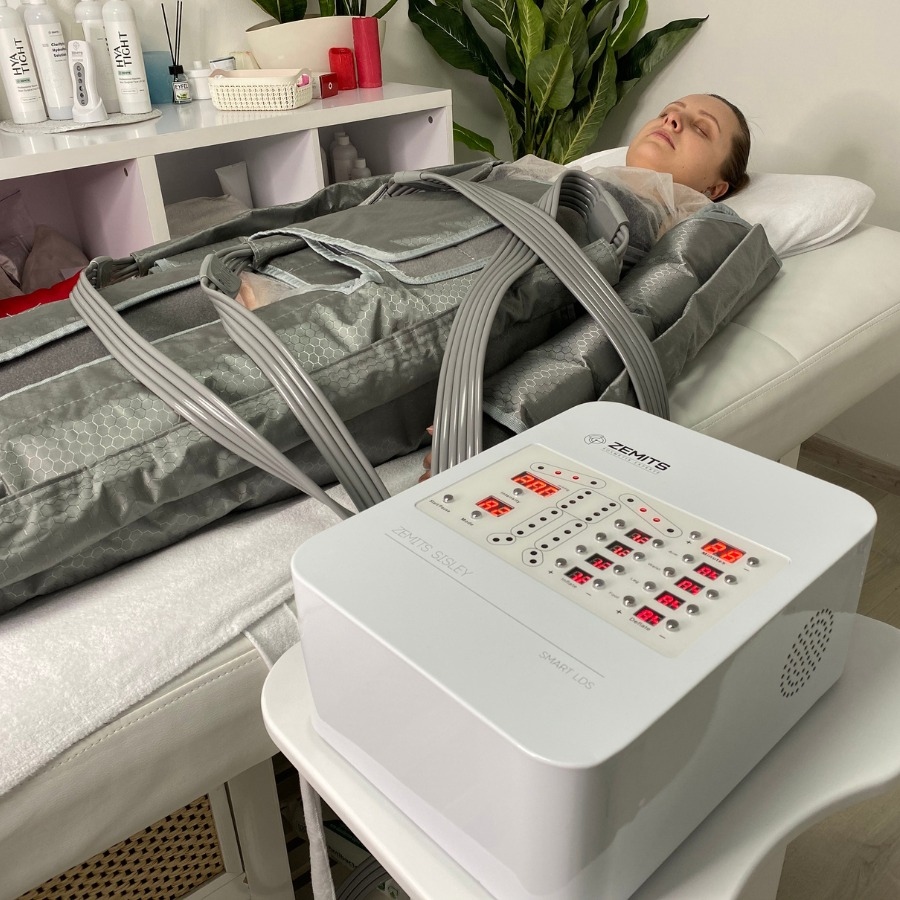Cellulite is a culprit that affects the bodies of millions of women. Approximately 85% of post-pubertal woman has a form of cellulite. Many celebrities and public figures have invested great amounts of time and money on surgical and esthetic procedures in hopes of decreasing or even completely erasing signs of cellulite anywhere from their thighs to their arms. One of the most unappealing features of cellulite is its bumpy, cottage cheese-like appearance, and the cause of it lies in the structure of the skin rather than superficial imperfections.
The hypodermis, third-outermost layer of skin, is responsible for hosting the cause of cellulite. Small pockets of fat that are caused by enlarged fat cells, or adipocytes, stick up from the hypodermis into the dermis, causing a consecutive effect of bumps in the dermis and epidermis.
A second, similar theory adds that cellulite is a result of a laxity (or weakening) in the connective tissue bands in the dermis that allows for the fat protrusions to occur. Vertical connective tissues in the hypodermis serve as a support that retains fat cells in that layer of skin and not allow fat cells to protrude into the dermis and so on. However, when connective tissue efficacy is diminished, cellulite is a common consequence. In the case of cellulite, these tissues shrink and lead to an inflamed dermis and epidermis. Collagen and elastin, two major proteins that make up connective tissues in the skin, are often injured as a result of inflammation, creating a continuous cycle of adipocyte swelling and connective tissue deficiencies triggering cellulite formation.
What is the Role of the Lymphatic System in Cellulite Formation?
The lymphatic system in the human body is essentially the system that allows our bodies to drain tissue waste fluids, helps our immune system fight off pathogens, and moves fats from the intestines to the blood. To drain fluid from the body properly, the lymphatic system must be working in healthy condition. The lymphatic system is designed by a long network of vessels that goes through almost all bodily tissues in order to allow a fluid called lymph to be transported around. The circulation of lymph is comparable to that of blood. There are about 600 lymph nodes in the body. These nodes swell in response to infection, due to a build-up of lymph fluid, bacteria, or other organisms and immune system cells. When these functions are compromised, several issues arise; lymphedema, or lymph stasis, is one.
What is Lymphedema?
Lymphedema is a serious complication of lymphatic system malfunction, simply diagnosed as swelling in an arm or leg caused by a lymphatic system blockage. Lymphedema increases the risk of infection and other complications because lymphocytes cannot reach parts of the body where swelling occurs. The symptoms of lymphedema are most evident in the arms or legs, and pronounced swelling may cause fatigue and discomfort in performing routine daily activities.
Over time, fluid and proteins that accumulate in the tissues cause swelling and tissue scarring. This, in turn, may lead to non-pitting edema, a condition where physical pressure, like pressing down with a finger, does not cause the skin to indent. Swelling is not only detrimental to health but is extremely uncomfortable for those who suffer from it severely. Estheticians and doctors often recommend patients to treat the symptoms of lymphedema by undergoing massages that help the body expel excess fluids that contribute to swelling. Massage therapy has been known for many years to stimulate blood flow and improve circulation in all individuals, proving to be an incredible benefit for those who experience blockage in their lymphatic systems.
Whether one has lymphedema or just minor localized swelling, however, it is a sign the lymphatic system is experiencing problems that must be fixed for both cosmetic and medical health purposes. Lymphedema is uncomfortable to live with, and patients must explore their options in choosing the safest, most effective treatment regimen for them.
What Does Cellulite Have to do With it?
Cellulite is a condition that causes the skin to take on a lumpy, dimpled appearance. Known as “orange peel”, the onset of cellulite often results from poor lymph circulation that causes fats, toxins, and wastes to become stuck under the surface of the skin. The lymphatic system affects this because it transports lymph, a fluid that is very heavily involved with the cells of the body. In fact, it assists in delivering nutrients to the cells, as well as taking away toxins from them.
Lymphatic vessels transport waste matter to lymph nodes for destruction and eventual expulsion. Over 600 lymph nodes in the body work together to cleanse and nourish the cells, serving as a key player in detoxification. When lymph nodes are filled with waste and cannot function properly cellulite forms. All the toxins and unwanted materials that should be emitted from the body pile up instead, and accumulate in the tissues and cells. Since the lymphatic system does not have a pump like the circulatory system does (the heart), movement is necessary to stimulate lymph flow. Poorly functioning lymph could cause fat cells to swell and trigger cellulite, especially in fat cells, where there are 500 to 1,000 times more toxins than in other tissues.
Many elements that increase fluid retention in the body are also associated with decreased firmness in the skin, minor inflammation, fat accumulation in the superficial layer of the skin, and connective tissue fibrosis, all effects that impact cellulite severity. In many women, fluid retention is the core cause of cellulite. Targeting lymphatic drainage alone, through methods like manual massage, is often times not enough to truly reduce cellulite. Rather, patients should opt for treatments that decrease water retention while simultaneously toning the skin.
Evidently, cellulite is not a localized problem anywhere in the body; instead, it is a systemic symptom of a greater issue: lymphatic malfunction. To truly treat cellulite, its core issue must be targeted: poor lymphatic system functionality.
How Can We be Freed from Cellulite?
Because cellulite is a product of lymphatic system blockage, it is best treated by stimulating lymph flow. Pressotherapy is one very popular method to achieve this. Pressotherapy is a treatment method to detoxify the body by stimulating the body’s natural processes of expelling toxins and waste products. Through this process, tissues are rejuvenated, cleansed, and oxygenated; thus, legs, stomach, and arms are slimmed. This treatment is especially recommended as a safe, non-invasive alternative to liposuction in individuals who experience constant bloating and swelling in various regions of their bodies. However, many individuals who do not suffer from visible cellulite or swelling also opt to undergo pressotherapy to redefine their figures and detoxify their bodies.
How Does Pressotherapy Work?
During pressotherapy, a patient will wear a specialized suit that serves as a compression system. A pump, controlled by a computer, inflates and deflates various parts of the suit. The squeezing action helps move blood and lymph out of muscle tissue. This can help filter toxins and metabolic wastes into the circulatory system and out of the body quicker than usual. Pressotherapy is also well-known for stimulating blood flow, which can reduce swelling, diminish the appearance of cellulite, and increase body definition. This is done by infrared technology that stimulates dissolved fats to enter the bloodstream and lymph fluid to eventually be flushed out completely. Pressotherapy relieves inflammatory responses, promotes healing, and energizes patients.
Dermatologists understand the significance of cellulite in affecting women’s quality of life, leading to an expanding beauty market where technologies are constantly being developed to combat this issue. In this age, those affected by cellulite do not have to be controlled by it. Pressotherapy is one of these incredible technologies that aims to promote health, beauty, and comfort, all at once.
Benefits of Pressotherapy treatment
- Relieves feeling of heaviness in the legs
- Reduces cellulite caused by fluid accumulation
- Detoxifies the entire body
- Prevents the formation of varicose veins
- Tones the body, especially after liposuction
- Diminishes inflammation in the limbs
- Stimulates blood and lymph flow
- Promotes healthy circulation
- Pushes the body to remove toxins and metabolic wastes
- Refreshes skin tone
- Leaves patients feeling massaged and relaxed
Best Pressotherapy Products on the Market Today
Lymphatic Drainage Machine Zemits Sisley
Benefits of the Lymphatic Drainage Machine Zemits Sisley:
- Optimal technical specifications for slimming and body shaping
- Hands-free for estheticians; no more need for strenuous manual massages
- Powerful Air Pressure: up to 200 mmHg
- Modern fancy design
- Easy-to-control panel
- Built-in controllable timer
- FDA-Registered
- 2-year warranty
- Lifetime client support
The Lymphatic Drainage Machine Zemits Sisley has 28 individual airbags that compress the body. Pressotherapy is a computer controlled compression system, which operates using inflating pumps. The device has five separate chambers, which are positioned around the limbs. These focus on stimulating venous and lymph flow, starting from the ankles and moving to the upper thighs. Designed to increase blood circulation and lymph flow, pressotherapy enhances extracellular fluid clearance, reduces bloating, swelling, and edema alleviates leg fatigue, and improves oxygen flow throughout the entire body.
Pressotherapy can be used in conjunction with seaweed wraps to detoxify, firm, tone, improve circulation, and increase lymphatic drainage. This is a great, relaxing alternative to liposuction, which can be coupled with vacuum therapy treatments for exceptional results.
For more information, visit our website or give us a call to discuss adding pressotherapy to your business today!



































